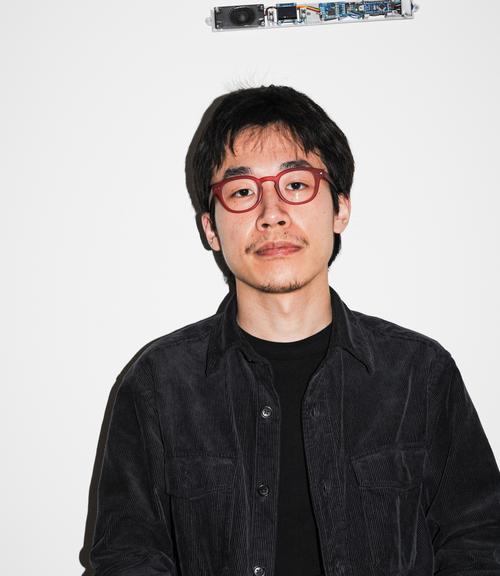Digital screens are everywhere, constantly generating information that disappears the moment you put your device down. The barrage feels unrelenting, like a fast, all-consuming current that washes over you — rarely inviting pause or reflection.
In Interfaces, a thought-provoking ongoing series, London-based designer and artist TJ (Tianju) Chen disengages from this digital current and translates it into permanence. By engraving digital interfaces — emails, menus, cursors, pop-ups — into stone, one of the oldest and most enduring materials we know, Chen creates a meditative tension between the fleeting nature of digital life and the physical weight of being in the real world.
Interfaces gives form to the ghostly traces of our screen-based lives — moments that are otherwise gone in a blink — and allows us to hold them, to feel their density, to experience something tactile. Glowing pixels and mobile layouts are stilled, frozen forever in stone. Chen’s process celebrates the overlooked architecture of our digital routines, elevating the mundane into quiet icons of contemplation.
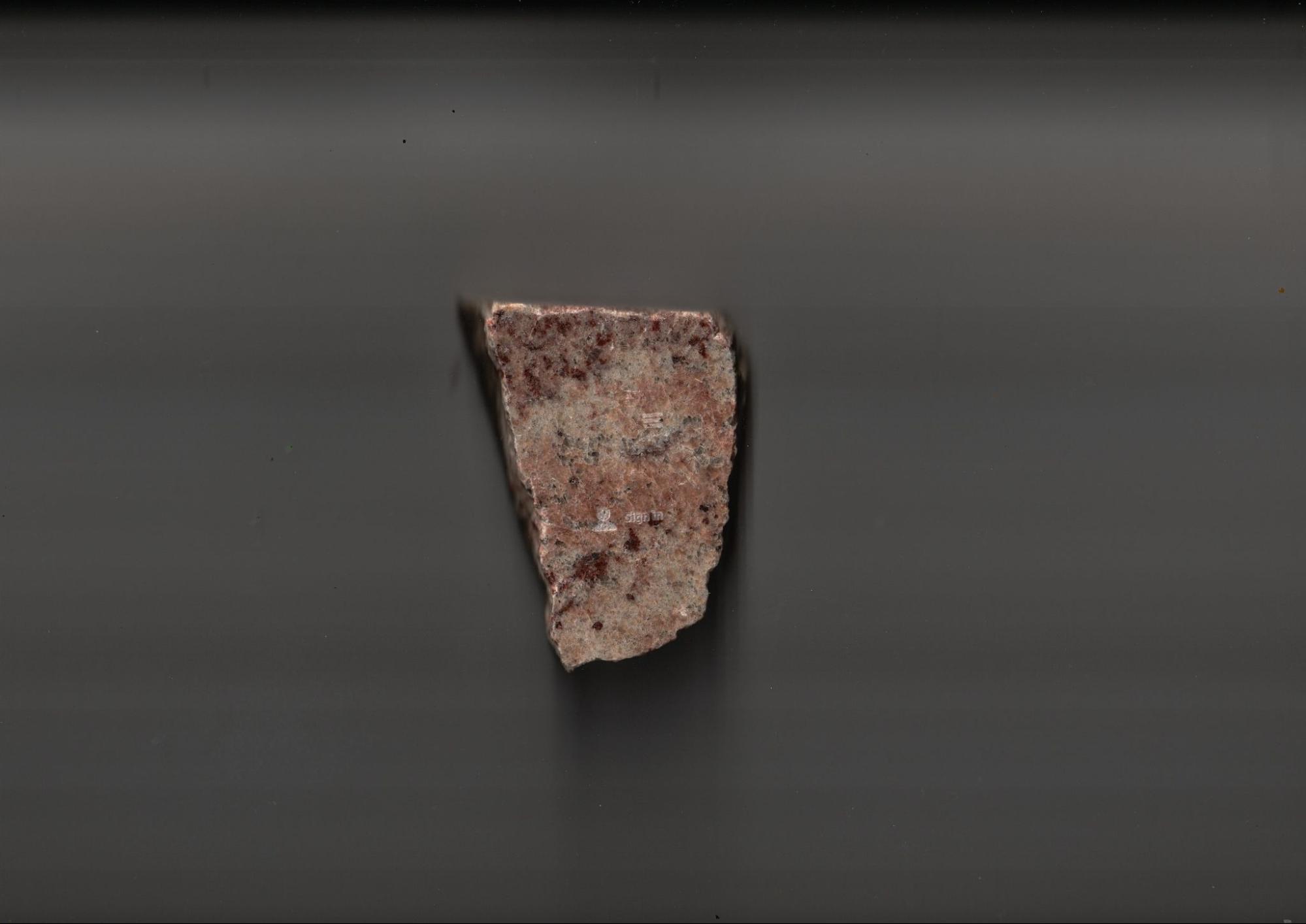
By rendering digital interactions — usually weightless, untouchable — as sculptural artefacts, Chen invites us to confront the irony of the screen: an interface that feels immaterial, yet is made from solid glass or plastic. This subtle reminder of materiality reframes how we think about the surfaces that mediate our daily experience.
More than that, Chen’s work draws deeply from his background in both design and engineering. He explores the tensions, hopes, and contradictions of technology as something that promises to enhance human ability while often reducing it to a scroll. While clearly skeptical of the digital commodities that sell us distraction as delight, Chen investigates the deeper systems that shape how we access, consume, and interpret information.
In Interfaces, that inquiry takes on a poetic tension: between the built-in obsolescence of digital tools and the geological time of carved stone. Each slab becomes a time capsule. Some capture the skeletal shape of an email inbox — a space we all know intimately but rarely think of as cultural artefact. Familiar icons, folders, and text are cast like shadows into dark stone, stripped of their animated fluidity yet imbued with quiet significance. Others focus on the humble cursor — a flickering guide in our daily digital choreography. Here, it becomes sculptural, an anchor of presence and motion in a space without body.
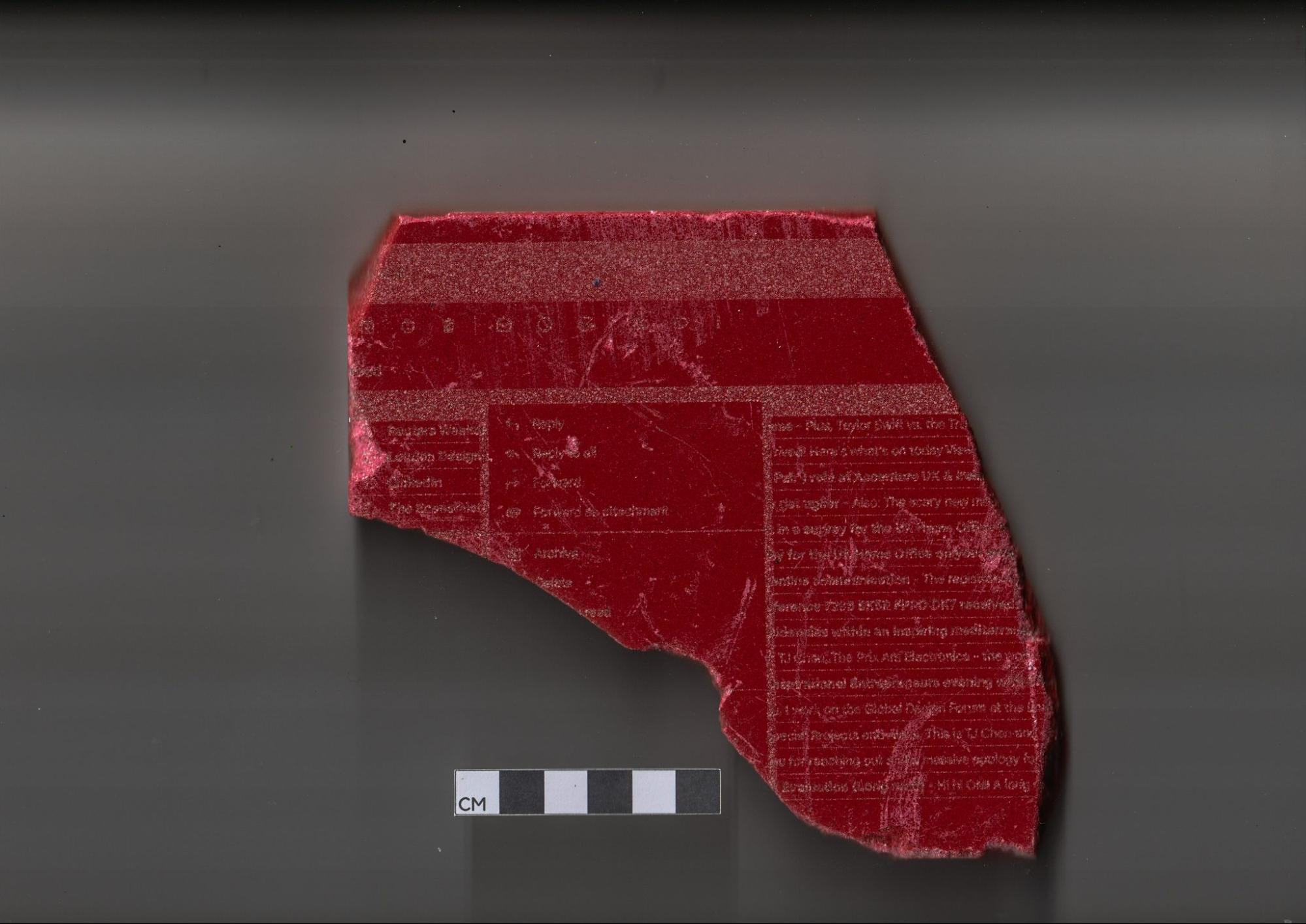
Stone Engraved
17 x 15 x 2 mm
2024
These stone pieces act like tactile fossils — elegant, tomb-like reflections that confront the ways digital interfaces shape how we think, what we see, and what we value. Interfaces are designed to refresh constantly, to be replaced, to keep us moving. Chen reverses that dynamic. He invites us to stop. To think. To feel a kind of nostalgia for the solid, the durable, the real.
Interfaces is also a new kind of archive — one that walks the line between memory and imagination. The works preserve the logic and visual grammar of contemporary digital communication, but their permanence raises deeper questions: What will remain of this era when the screens go dark? What physical traces will be left of our culture, our stories?
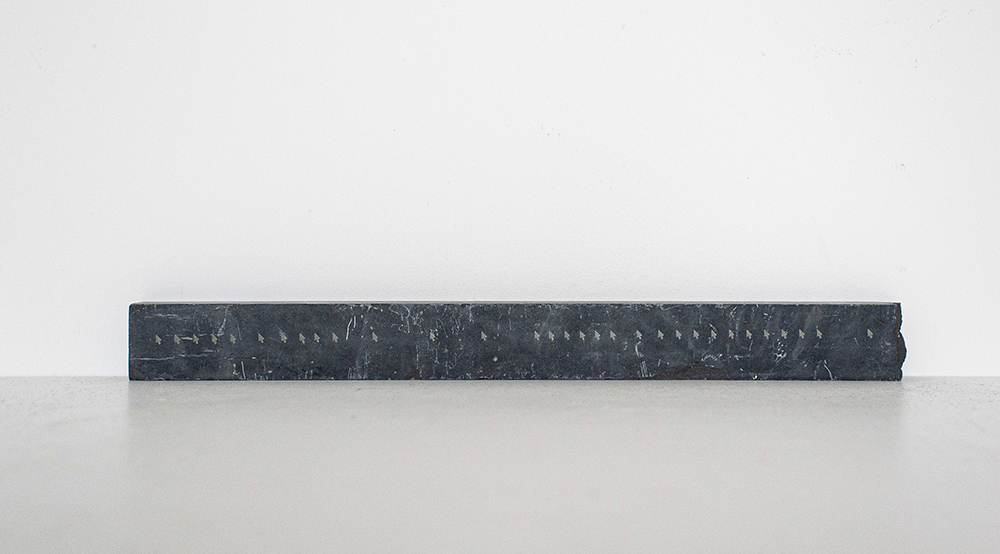
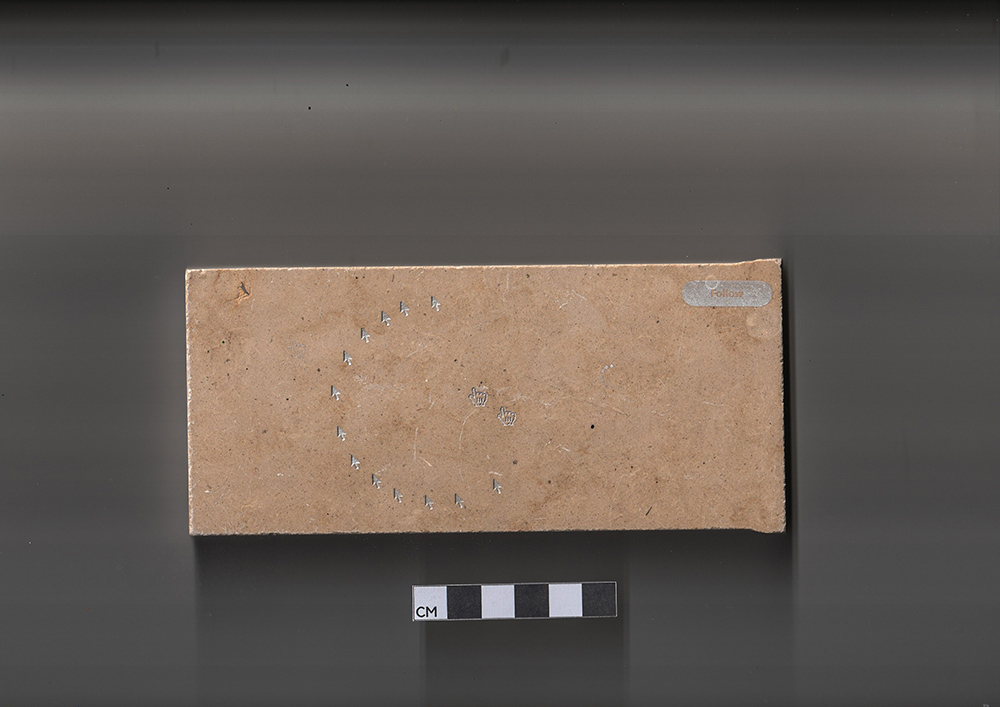
Chen’s choice of stone isn’t incidental. It’s loaded with meaning. Stone has carried human memory for millennia — through monuments, inscriptions, ruins. By inserting digital ephemera into this lineage, Chen positions our screen lives not as throwaway experiences, but as worthy of reverence and reflection. What we usually dismiss as temporary, he treats as significant.
From the conceptual to the material, Interfaces blurs boundaries. The sharp carvings echo the clean lines of interface design. The cold weight of stone plays against the electromagnetic haze of digital space. These formal juxtapositions ask viewers to come closer, to touch, to consider what we so often scroll past without a second thought.
Chen’s dual training as designer and engineer is central to the work. His technical precision enables a critique of digital culture that is not just theoretical, but tactile. He reflects on the systems — tools, platforms, environments — that extend our capabilities but also flatten our attention, wrapping his concerns into the meaning embedded in each piece.
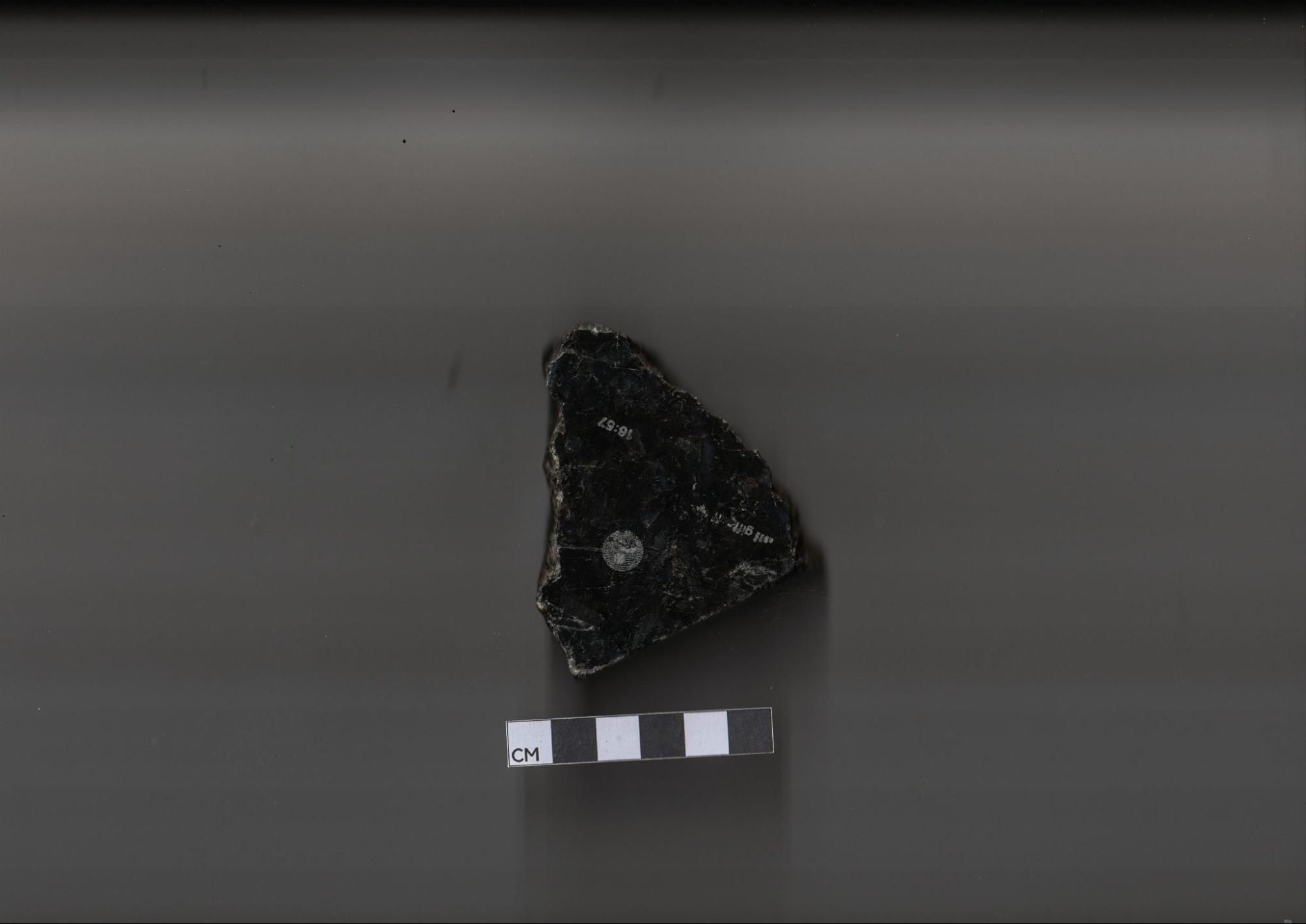
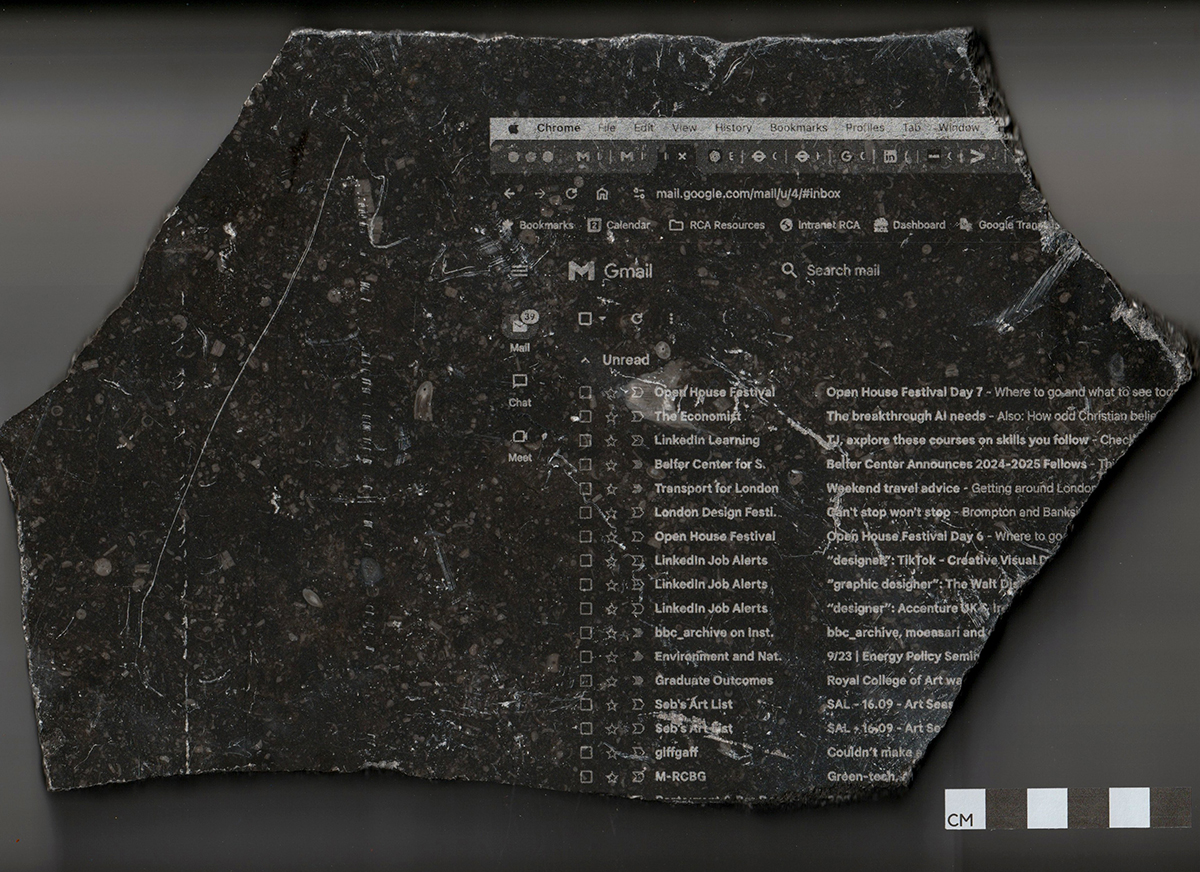
His creative and technical practices intertwine. Chen has exhibited internationally — including at Getxophoto (Spain), Milan Design Week, London Design Festival, and the International Body of Art, London. Beyond the art world, he’s worked with companies like Nothing Tech and Postler Ferguson as a Creative Technologist. His educational foundation — a Master’s from the Royal College of Art and a Bachelor of Engineering from the China Academy of Art — continues to shape the conceptual and material depth of his work.
Interfaces isn’t just an archive of digital forms. It’s a meditation on how we live with and through the screen. By treating the cursor as a human trace — a record of motion, of presence, of time — Chen reminds us that behind every interaction is a person, navigating the blur of modern life. In carving these ephemeral gestures into stone, he honors a distinctly modern mode of being.
This project lands powerfully in our moment. We live inside interfaces. We enact ourselves digitally, every day. Chen’s work asks the essential question: what will future generations see when they look back? What will remain of us, once the glow is gone?
TJ Chen’s Interfaces is a poetic and critical lens on our time — bridging the ancient with the digital, the permanent with the fleeting. It turns the hidden frameworks of our digital lives into solid bookmarks — quiet witnesses to an age defined by speed, interaction, and never-ending change.
Through Interfaces, Chen urges us to reclaim our digital world as something more than utility — something cultural, something worthy of preservation. In translating flickering pixels into weight and form, he gives us the chance to hold the present in our hands — and remember it.
